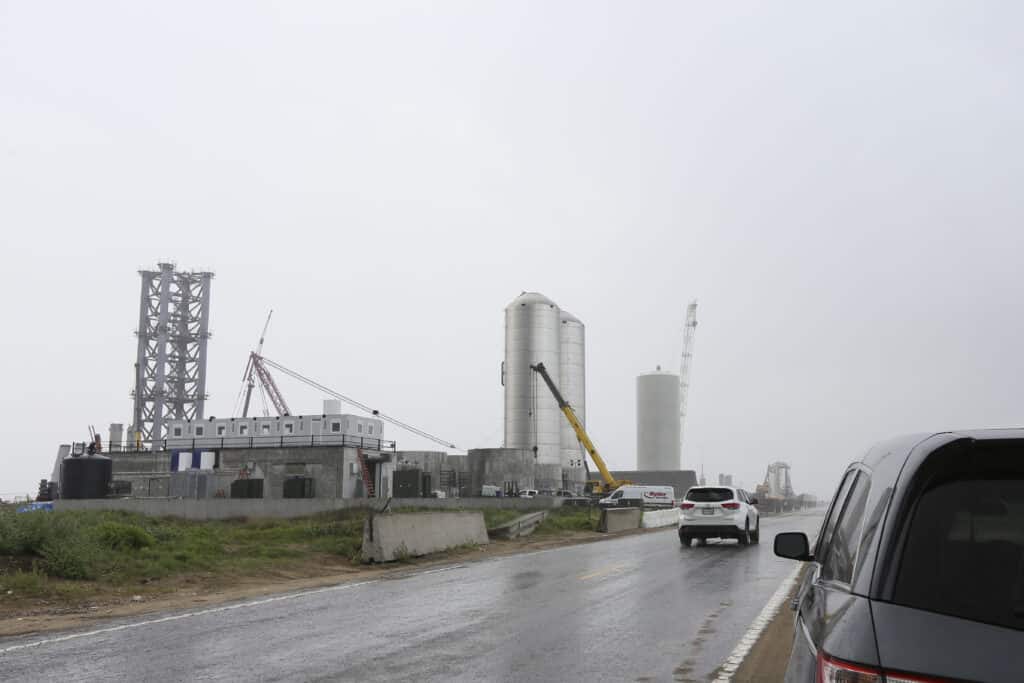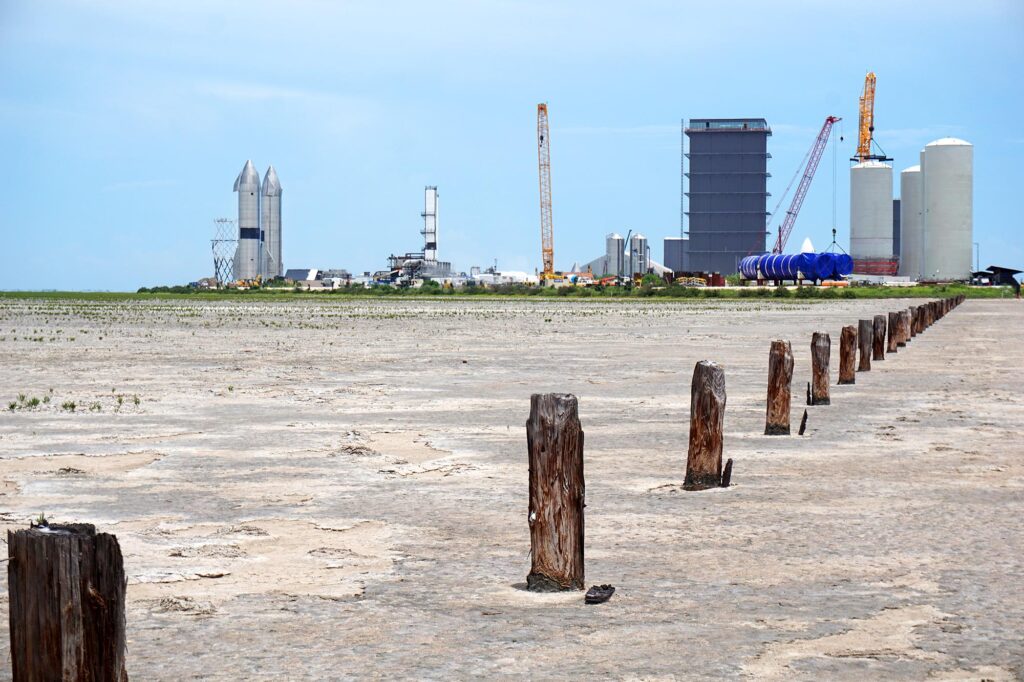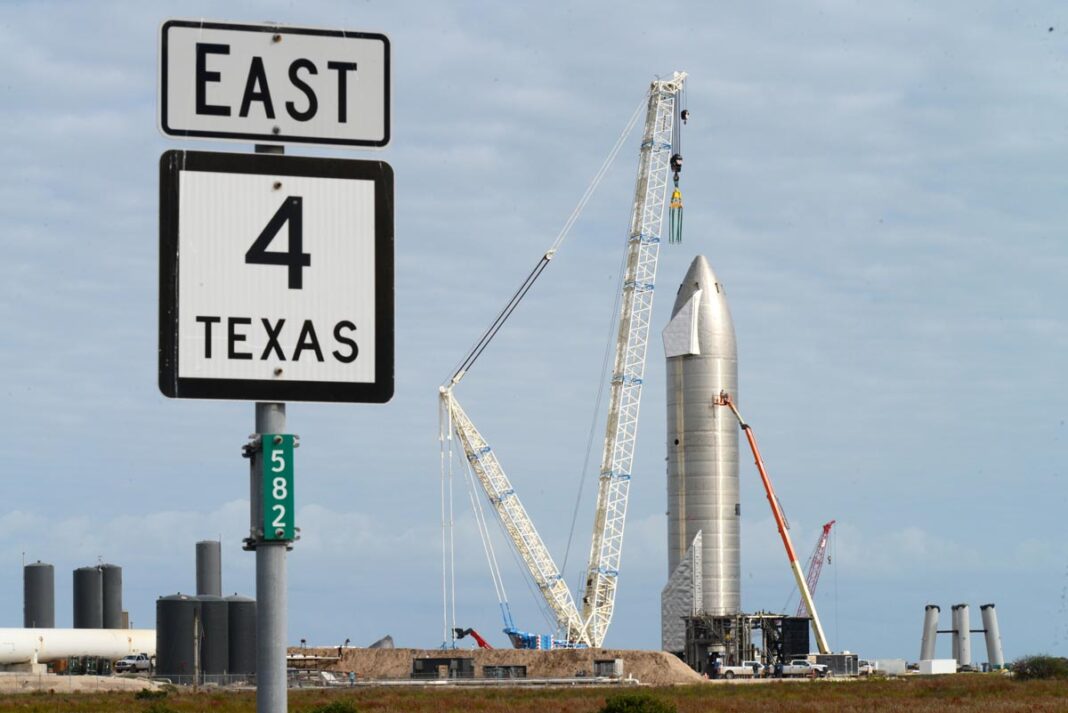The Federal Aviation Administration on Friday released a draft programmatic environmental assessment of SpaceX’s plans for Starship/Super Heavy development at Boca Chica, with a 30-day window for public review and comment and public hearings scheduled for next month.
In a summary of the draft PEA, prepared by SpaceX under FAA supervision, the agency states that its Proposed Action and preferred alternative “is to issue one or more experimental permits and/or a vehicle operator license(s) to SpaceX,” which would allow the company to launch and land Starship/Super Heavy. The FAA noted that SpaceX plans to use Starship/Super Heavy for low-Earth orbit, sun-synchronous orbit, geostationary transfer orbit, and interplanetary missions for people and cargo.
The FAA also evaluated not granting the permits, though the agency is not proposing this “no action” alternative. The draft PEA looks at various potential environmental impacts from the Starship/Super Heavy program. It doesn’t cover the entire development program, since SpaceX doesn’t have details of all its planned operations going forward, though it does provide details of the company’s “initial mission profile” and potential additional development at Boca Chica, according to the FAA.
Issuing experimental permits is considered a “major federal action” and thus requires an environmental review per the National Environmental Policy Act, according to the FAA. The “purpose and need” addressed in the draft PEA has to do with SpaceX’s proposal to “provide greater mission capability” to NASA, the Department of Defense and commercial customers.

The government is expecting SpaceX to make the cost of space transportation more affordable because the company plans to reuse its Starship spacecraft and Super Heavy boosters. In April NASA awarded the company a $2.9 billion contract to develop Starship as the lunar lander for putting U.S. astronauts on the moon for the first time since 1972.
More than 320 comments were submitted as part of the scoping phase of the PEA. The commenters expressed concerns over the potential impacts of SpaceX’s plans on protected species and habitat, cumulative effects on other development projects in the Rio Grande Valley, closure of public areas, namely S.H. 4 and Boca Chica Beach, and appropriateness of an environmental assessment versus the more rigorous environmental impact statement.
Commenters likewise expressed concerns about potential impacts on airspace, minority and low-income residents, and land of cultural importance; safety of launch operations with as-yet-to-be-constructed liquefied natural gas facilities nearby at the Port of Brownsville, and environmental degradation.
Comments in favor of SpaceX mentioned economic benefits to the regional economy, innovation and progress in commercial space transportation, the benefits of reusable launch vehicles, and job creation. The FAA said all comments received were given equal weight in preparation of the draft PEA.
SpaceX is proposing 20 suborbital launches of Starship and five orbital launches/landings per year during the development phase. The Super Heavy (first stage) boosters would separate from the Starship (second stage) at roughly 40 miles altitude and land either at the Boca Chica launch site or downrange in the Gulf, either on a floating platform or in the water itself, according to the draft PEA.

Starship would land either at the launch site either at the Boca Chica site or downrange on a floating platform in the Gulf, the Atlantic Ocean or the Pacific ocean, according to the document.
The draft PEA concludes that SpaceX operations at Boca Chica would have no significant impact on air quality or climate. Noise from launches and engine tests is expected to be heard in surrounding communities including South Padre Island, Laguna Vista, Port Isabel and Brownsville, though computer modeling shows the noise impact would not be significant, according to the draft PEA. Single-event sonic booms from Starship and Super Heavy landings were also modeled and deemed not to be of significant impact in terms of noise.
“Structural damage on South Padre Island from sonic booms generated during Super Heavy landings at (Boca Chica) is expected to be rare with only minor impacts, such as glass breakage, if it does occur,” reads the draft PEA. Other areas the document concludes will not be impacted significantly include environmental justice, socioeconomics, and children’s health and safety; coastal, biological, water and cultural resources.
While SpaceX would use hazardous materials and generate hazardous and solid wastes during construction and operation, the company’s Anomaly Response Plan and Spill Prevention, Control and Countermeasure Plan in the event of an accidental release would prevent significant impact in terms of hazardous materials and waste release, according to the draft PEA, which nevertheless lists a number of mitigation measures SpaceX would be required to undertake, including in the category of biological resources.
The FAA plans to hold virtual public hearings Oct. 6-7 as part of the 30-day public comment period, which ends Oct. 18. Comments or questions on the draft PEA can be addressed to Stacey Zee, SpaceX PEA, c/o ICF, 9300 Lee Highway, Fairfax, VA 22031. Comments can also be submitted via email to [email protected].

The draft PEA is available online at faa.gov/space/stakeholder_engagement/spacex_starship/.
Hard copies of the draft PEA are on display at the Brownsville Public Library Main Branch, 2600 Central Blvd, Brownsville Public Library Southmost Branch, 4320 Southmost Rd., and the Cameron County judge’s office in the Dancy Building, 1100 E. Monroe St., Brownsville.
After the public-comment period is closed, the FAA will revise the draft PEA as appropriate in preparation of a final Programmatic Environmental Assessment, according to the agency.
“The final PEA will reflect the FAA’s consideration of comments and will provide responses to substantive comments,” the FAA said. “Following review of the final PEA, the FAA will either issue a Finding of No Significant Impact (FONSI), Mitigated FONSI, or issue a Notice of Intent to prepare an Environmental Impact Statement.”




